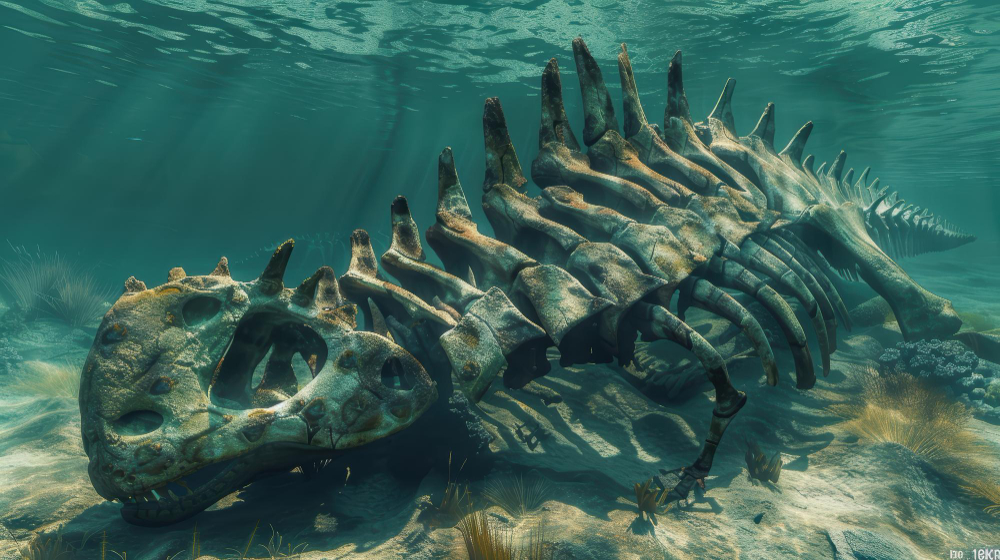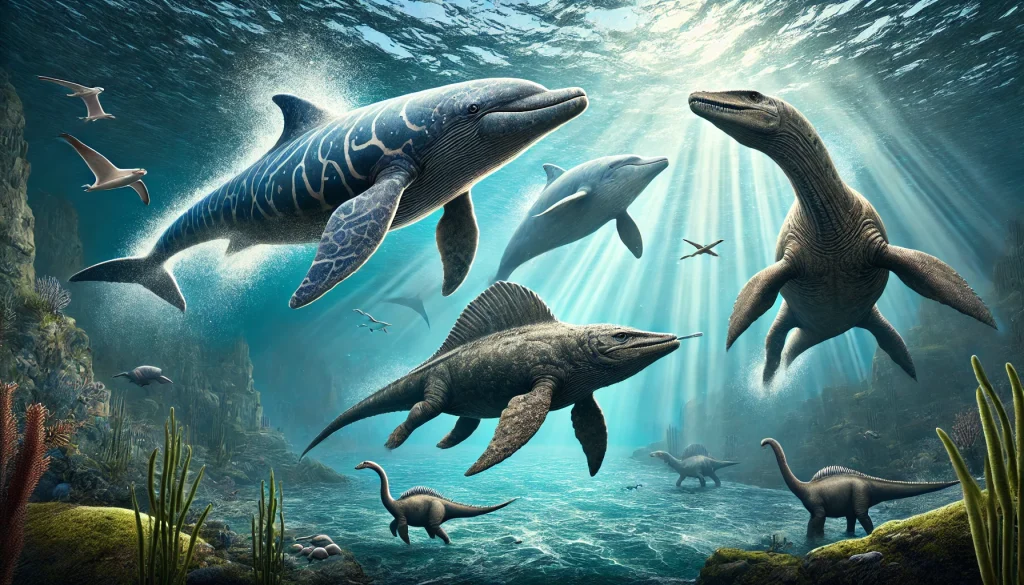For millions of years, the oceans of the Earth were dominated by colossal creatures that rivaled in size and ferocity with terrestrial dinosaurs. These marine giants of the Mesozoic era were reptiles adapted to life in the water, and their existence completely transformed the marine ecosystems of the Triassic, Jurassic and Cretaceous. Through the fossil remains found throughout the world, paleontologists have been able to rebuild their characteristics, behavior and the role they played in the evolutionary history of the planet.
🐬 The ichthyosaurus: the Triassic giant
The Ichthyosaurus was one of the first marine reptiles to conquer the oceans during the Triassic period. With a similar form to that of modern dolphins, its aerodynamic body was perfectly adapted for speed and agility underwater. It is estimated that it could reach lengths of up to 4 meters and was a skilled fish and squid hunter. Despite its friendly appearance, this predator had sharp teeth and an excellent view, which made it a fearsome competitor for marine supremacy.
🦕 Plesiosauro: The King of Jurassic
Durante el período Jurásico, hizo su aparición el famoso plesiosauro, una criatura reconocible por su largo cuello y su cuerpo ancho con cuatro potentes aletas. Aunque su cuello largo pudo haberlo hecho vulnerable, en realidad lo utilizaba con gran eficacia para emboscar a sus presas, desplazando su cabeza silenciosamente entre bancos de peces. Algunos ejemplares llegaban a medir más de 10 metros de longitud. Su diseño corporal le daba una gran maniobrabilidad, lo que lo convertía en un depredador eficiente en aguas costeras y profundas.
🐊 Mosasaurio: El titán del Cretácico
In the last chapter of the Mesozoic era, during the Cretaceous period, one of the most imposing marine reptiles of all emerged: Mosasaurus. This titan could reach up to 18 meters in length and was a high -level predator, capable of facing sharks, giant fish and even other mosasaurs. His jaws were armed with curved and sharp teeth, ideal to catch and tear their prey. His muscular body and his long tail made him very fast in the water, while his aggressive behavior made him the authentic owner of the seas.
🌍 The great extinction of the Cretaceous
Unfortunately, like many other living beings of that time, marine giants did not survive the great extinction of the Cretaceous approximately 66 million years ago. This catastrophic event, possibly caused by the impact of an asteroid and the increase in volcanic activity, caused a massive ecological collapse that ended with more than 75% of the planet's species. Thus the reign of these marine colossi ended, but their legacy is still alive in the fossils and in our imagination.

🧠 Did you know this?
🦎 Mosasaurus is not a dinosaur: Although he lived at the same time, he belongs to a group of reptiles closer to current lizards.
🔍 Iichyosaurios fossils have been found with embryos inside: This shows that they gave birth live offspring, such as current marine mammals.
🦴 Plesiosaur's neck could have more than 70 vertebrae: Many more than most modern animals.
🌌 The study of these marine reptiles helps to understand life on other planets: Its extreme adaptations could have parallels with life forms in oceanic moons such as Europe or on.
💬 What do you think?
Would you like to have swam next to a Mosasaurus or would you prefer to see them from afar? These creatures show us how extraordinary and terrifying the natural history of the planet can be.
Leave it to the comments and continue to explore curiosities with Pancho 😺








